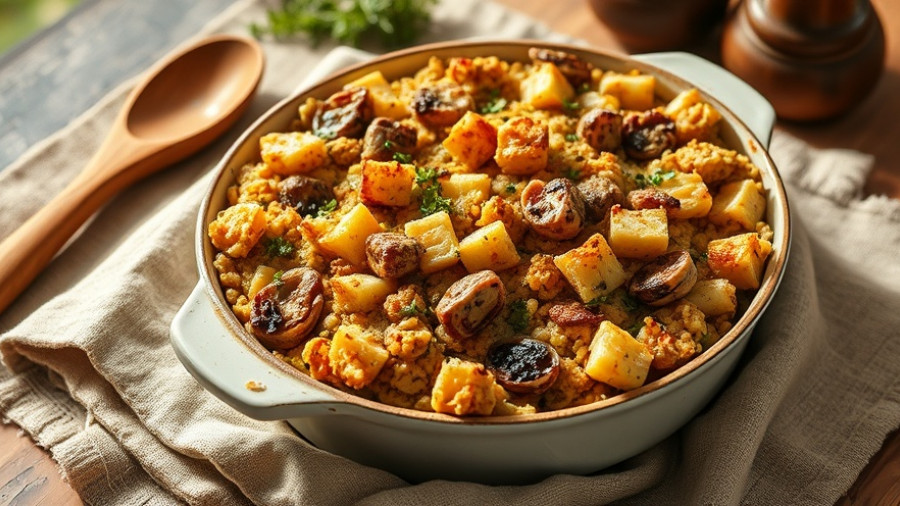
Oyster Stuffing: A Coastal Twist on Tradition
As Thanksgiving approaches, our holiday menus often consist of classic side dishes that have been passed down through generations. Among these, oyster stuffing emerges as a unique and flavorful option that embodies the best of coastal cuisine. For many in the Northeast, this dish is a staple, blending the rich flavors of shellfish with the comforting essence of traditional stuffing.
Why Choose Oyster Stuffing?
While some may assume that oyster stuffing will overwhelm the palate with a fishy taste, the reality is that if prepared correctly, the dish celebrates a mild, buttery flavor that enhances rather than dominates. The right combination of tender oysters, savory herbs, and crusty bread is what elevates this dish to a new level of deliciousness, making it a standout at any Thanksgiving gathering.
Understanding Oysters: The Key to Flavor
To make the perfect oyster stuffing, one must start with quality ingredients, particularly the oysters. Freshness is paramount; look for oysters with tightly closed shells and a fresh, oceanic aroma instead of any off-putting fishy scent. Different types of oysters can also alter the flavor profile. For example, Pacific oysters are known for their sweetness, while Eastern oysters contribute a briny punch. If you're aiming for a subtle taste, consider using Kumamoto oysters, known for their delicate sweetness.
Preparing the Perfect Stuffing
Making oyster stuffing is simpler than one might think. The recipe typically includes celery, onion, and a blend of herbs sautéed in butter to create a flavorful base. Combine this with cubed day-old bread, a beaten egg, and, of course, your choice of fresh oysters. Following the baking instructions carefully will help achieve that perfect, golden-brown finish that everyone loves.
Cooking Tips for the Best Oyster Stuffing
When crafting your oyster stuffing, here are a few practical tips to ensure success:
- Use Day-Old Bread: Fresh bread can become too soggy during the mixing process. Day-old bread provides the right texture and absorbs just enough moisture.
- Be Gentle: When combining the ingredients, stir gently to keep the oysters intact. A delicate touch will ensure a pleasant texture in your final dish.
- Baking Tips: Keep an eye on your stuffing as it bakes. Depending on your oven, time may vary; remove it from the oven once it shows a light golden color and reaches an internal temperature of 160°F.
Why Oyster Stuffing Should Be on Your Table
Adopting oyster stuffing into your holiday repertoire can not only diversify your Thanksgiving menu but also introduces guests to the richness of coastal flavors. It's easy to prepare, making it a fantastic choice for those new to cooking or looking to add a twist to their festive feast. The experience of enjoying this delicious dish, along with family and friends, can create lifelong memories.
As you prepare your Thanksgiving meal, consider incorporating oyster stuffing to celebrate the culinary traditions of the coast. This dish not only nourishes the body with its wholesome ingredients but also enriches our souls with every shared bite.
 Add Row
Add Row  Add
Add 




Write A Comment